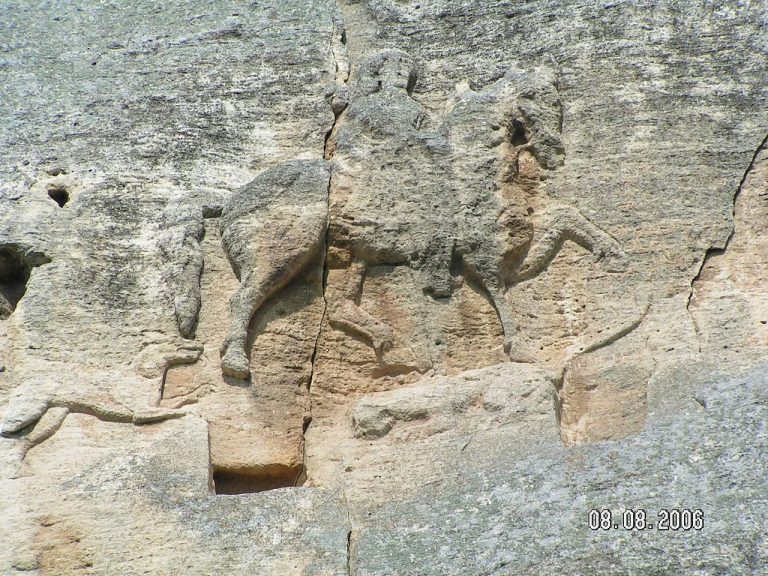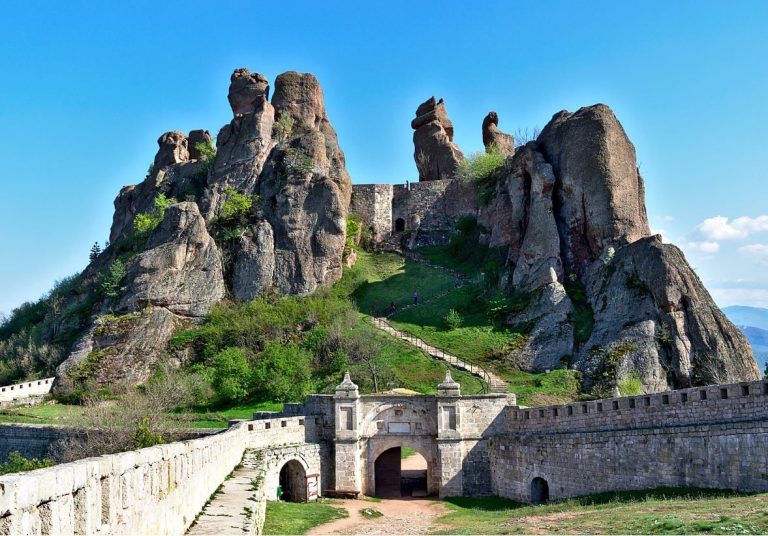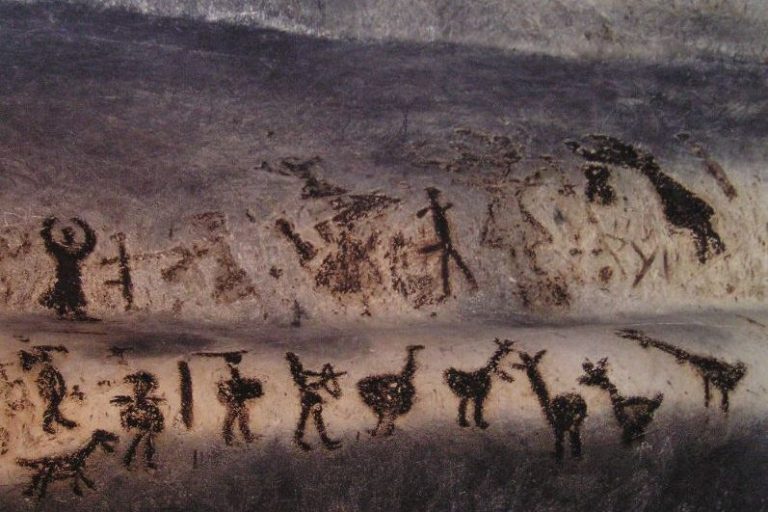Bulgaria
Bulgaria is
- roughly 60kmx250km
- a member of the EU & Schengen,
- borders on Greece, Turkey, Rumania, Serbia & North Macedonia and the Black Sea.
- not yet using the Euro: currency is the Bulgarian lev (BGN), 1 lev = 0.5€)
- Language: Bulgarian, written in the Bulgarian Cyrillic alphabet
Black Sea Coast
The coastline is 378 km long, with 209 beaches. BROCHURE
Wine & Cuisine
Bulgaria is famous for its wine. The oldest sort is called Mavrud, local sorts include “Wide Melnik Vine”, “Cabernet Sauvignon” and “Merlot”, grown in the Struma river valley.
Every meal on the Bulgarian table is a collection of fresh seasonal products and scents coming from the garden or the mountain - most of them are cooked in pottery on low temperatures.

Culture & Architecture
cultural monuments of UNESCO.
- Boyana Church (exquisite wall-paintings),
- Madara Rider (Europes largest rock-relief),
- Tomb of Kazanlak (monument of Thracian culture),
- Rock-Hewn Churches of Ivanovo
- Thracian Tomb in Sveshtari
- Rila Monastery,
- Old town of Nessebar…
Countryside
Mountains, Farmland & Coastline:
Vistosha, Rila, Pirin and the Rhodope mountains, and near them the impressive shape of the Balkan Range.
Bulgaria - Overview
We'll probably arrive from the romanian Black Sea coast, and return home afterwards, probably via Parndorf (near Vienna): the obvious return route is via Belgrade (Serbia), but unless we get a titer-test for Josie, we'll have to detour to avoid leaving the EU (eg via Timisoara), adding 90 minutes to the journey (but little distance).

Bulgarian Road-Trip
This map shows a potential road-trip, assuming we travel along the Black Sea coast from Tulcea, Romania entering Bulgaria near Durankulak:
- Cape Kaliakra
- Sveshtari (178km, 2:35)
- Madara (80km, 1:15)
- Veliko Tarnovo (164km, 2:06)
- Nessebar (244km, 2:55)
- Pomorie (20km, 0:21)
- Sozopol (48km, 0:52)
- Plovdiv (282km, 2:54)
- Orlovi Skali (130km, 2:25)
- Rila monastery (422, 5:24)
- Sofia (116km, 1:43)
- Belogradchik Fortress 180km, 2:57)
- Magura Cave (24km, 0:29)
Sights
Just some of the amazing sights from 6000 years of human activity...

Cape Kaliakra (1)
Kaliakra (Bulgarian: Калиакра) is a cape which ends with a long and narrow headland with a medieval fortress , 60 kilometres (37 mi) northeast of Varna.

Thracian Tomb of Sveshtar (2)
Discovered in 1982 near the village of Sveshtari, this 3rd-century BC Thracian tomb reflects the fundamental structural principles of Thracian cult buildings. The tomb has a unique architectural decor, with polychrome half-human, half-plant caryatids and painted murals. The 10 female figures carved in high relief on the walls of the central chamber and the decoration of the lunette in its vault are the only examples of this type found so far in the Thracian lands.

Madara Rider or Madara Horseman (3)
The Madara Rider or Madara Horseman[1] (Bulgarian: Мадарски конник, Madarski konnik) is a large early medieval rock relief carved on the Madara Plateau east of Shumen in northeastern Bulgaria, near the village of Madara.

Veliko Tarnovo (4)
historic city in the central-north of Bulgaria notable for its medieval ruins and its picturesque cityscape - it was built on the steep banks of the Yantra river as it snakes through the foothills of the Balkan Mountains. In the middle ages, Tarnovo was the capital of the Second Bulgarian Empire (1185-1396) and the partially restored ruins of the Tsarevets Fortress are the main sight of the city.

Ancient City of Nessebar, Black Sea (5)
Situated on a rocky peninsula on the Black Sea, the more than 3,000-year-old site of Nessebar was originally a Thracian settlement (Menebria). At the beginning of the 6th century BC, the city became a Greek colony. The city’s remains, which date mostly from the Hellenistic period, include the acropolis, a temple of Apollo, an agora and a wall from the Thracian fortifications.

Pomorie, Black Sea (6)
Along with going to the beach and visiting the SPA, be sure to also explore the Old Town of Pomorie. Here you will find some beautiful houses in traditional architectural style, which still carry the authentic Bulgarian spirit of the past.

Sozopol, Black Sea (7)
Sozopol is one of the oldest towns on Bulgarian Thrace's Black Sea coast. The first settlement on the site dates back to the Bronze Age.

Plovdiv (8)
Second-largest city in Bulgaria, 144 km (93 miles) southeast of the capital Sofia, with two ancient theatres; remains of the medieval walls and towers; Ottoman baths and mosques; a well-preserved old quarter from the National Revival period with beautiful houses; churches; and narrow paved streets.. Plovdiv is a cultural hub in Bulgaria and was the European Capital of Culture in 1999 and 2019

Rila Monastry (10)
Rila Monastery is in the Rila Mountains (Bulgarias highest peak) in the place where the rivers Drushlyavitsa and Rilska join.
Founded in the first half of 10 c. by the heavenly protector of the Bulgarians Saint John of Rila, the monastery is a cradle, a pillar and a repository of the Bulgarian spirit even today.
100km south of Sophia

Orlovi Skali, or Eagle Rocks (11)
The Orlovi Skali, or Eagle Rocks, is the perfect example of a fascinating Thracian site. Situated about 3 km from the city of Ardino, to the left of the road from Kardzhali, this imposing rock is covered with dozens of trapezoid niches, gaping at the Rhodope scenery.
The place has not been archaeologically researched, but the shrine is thought to have appeared sometime around the end of the 2nd Millennium BC. In all likelihood, it was used well through Antiquity.

Sofia (12)
Sofia[a] is the capital and largest city of Bulgaria. It is situated in the Sofia Valley at the foot of the Vitosha mountain, west of the Iskar river and has many mineral springs, such as the Sofia Central Mineral Baths. It has a humid continental climate. Sofia has been an area of human habitation since at least 7000 BC.
Must see:
- St. Alexander Nevski Cathedral
- Boyana Church
- Vitosha Mountain
- National Institute of Archaeology
- Ivan Vazov National Theatre
- Serdica Amphitheatre
- Park Vrana

Belogradchik Fortress (13)
An ancient fortress located on the north slopes of the Balkan Mountains(Old Mountain), close to the northwestern Bulgarian town of Belogradchik .It is one of the best-preserved strongholds in Bulgaria and a cultural monument of national importance.
The fortress's walls are over 2 metres (6.6 ft) thick in the foundation and reaching up to 12 m (39 ft) in height. Three separate fortified yards exist that are connected with each other through gates. The fortress has a total area of 10,210 square metres (109,900 sq ft)

Magura Cave, Rabisha (14)
Cave paintings dating from the Epipaleolithic, late Neolithic, Eneolithic and early Bronze Age decorate some of the cave's walls. The paintings have been estimated to be made between 10.000 and 8.000 years ago.
The Magura Cave (Bulgarian "пещера Магура") is located in north-western Bulgaria close to the village of Rabisha, 25 km (16 mi) from the town of Belogradchik in Vidin Province.

Basarbovo Monastery
Basarbovo Monastery (Bulgarian: Басарбовски манастир) – the Monastery of Saint Dimitar Basarbowski – is a Bulgarian Orthodox cave monastery near the city of Ruse in north-eastern Bulgaria. It has the same name as the nearby village of Basarbovo and lies about 35 metres above the river Rusenski Lom, south of the Danube.
Although founded during the Second Bulgarian Empire, the oldest written mention of the monastery dates to the 15th century in an Ottoman tax register.

Nature Park Sinite Kamuni
The Nature Park Sinite Kamani is famous for its nature landmarks. "Halkata" (the Ring) - the arc-shaped stone garland, possessing, according to the legends, magic force - is one of the symbols of the town of Sliven. The forms that the nature has sculptured in the cave Zmeevi dupki (Dragon's holes) - Zmejat (the Dragon), Orelat (the Eagle) and Vladishkija tron (the Bishop's throne) are amazing.

Karadzhov Kamak Rock
Karadzhov Kamak is a natural rock formation of spectacular proportions and appearance. If you believe the modern myths, the Thracians venerated it as "the place of the dead," while Belintash was the "place of the living" and Krastova Gora "the place of the gods." It takes a two-hour walk to reach Karadzhov Kamak from Krastova Gora on a clearly signposted path that goes through a hunting area which is the home of brown bears and boars.
Wir benötigen Ihre Zustimmung zum Laden der Übersetzungen
Wir nutzen einen Drittanbieter-Service, um den Inhalt der Website zu übersetzen, der möglicherweise Daten über Ihre Aktivitäten sammelt. Bitte überprüfen Sie die Details in der Datenschutzerklärung und akzeptieren Sie den Dienst, um die Übersetzungen zu sehen.

